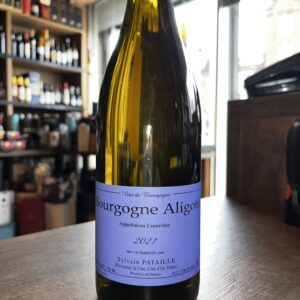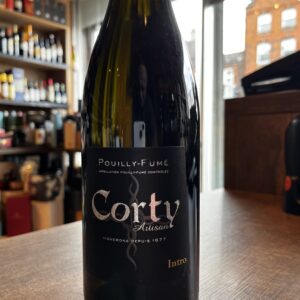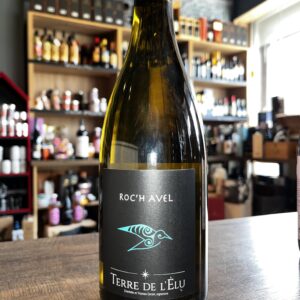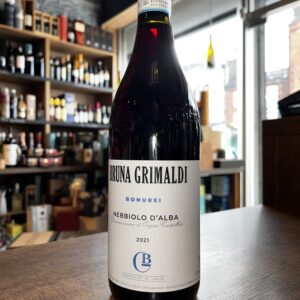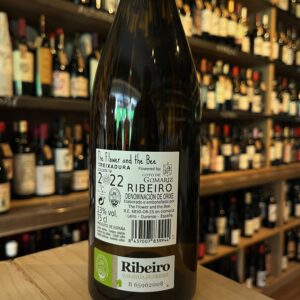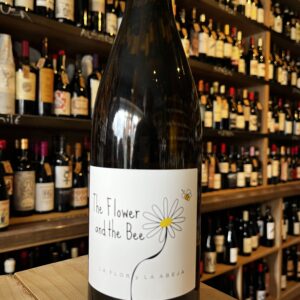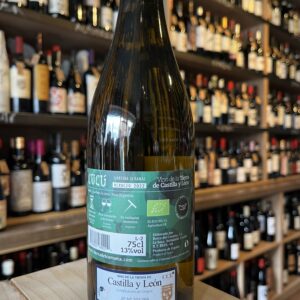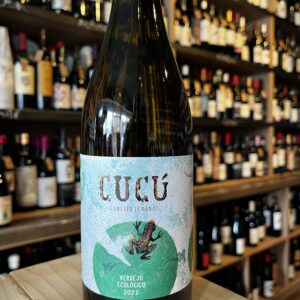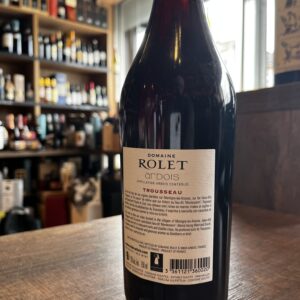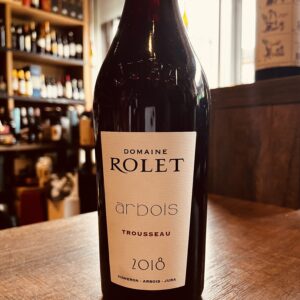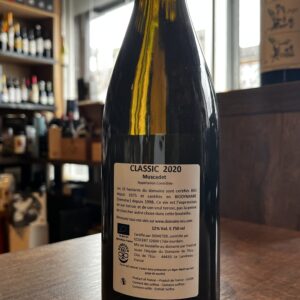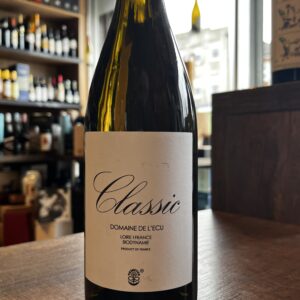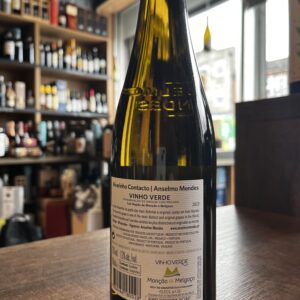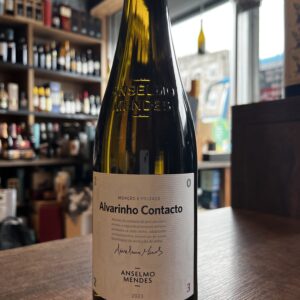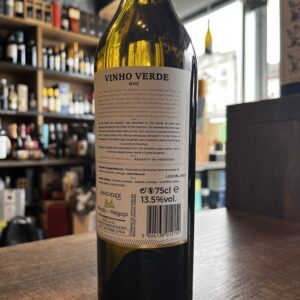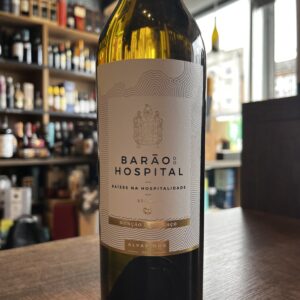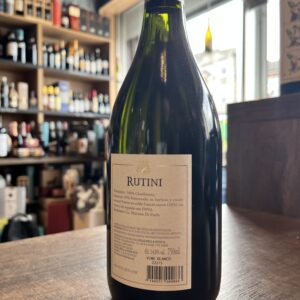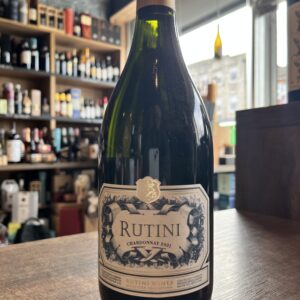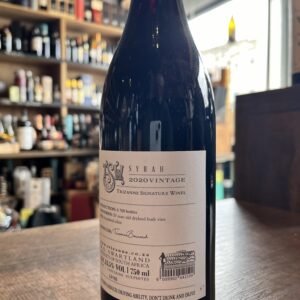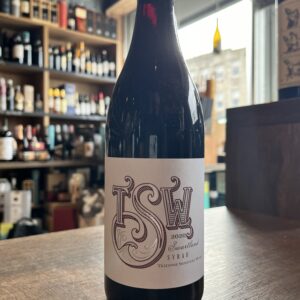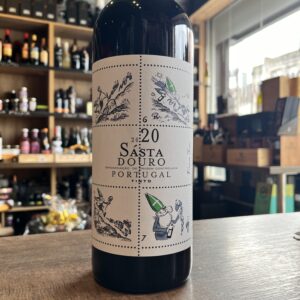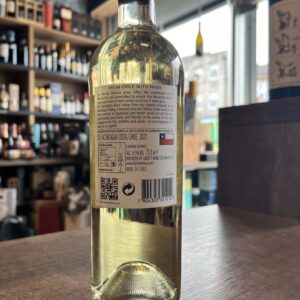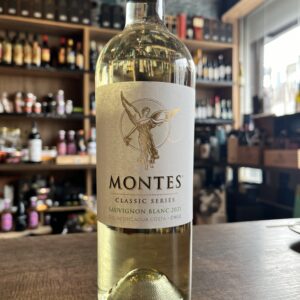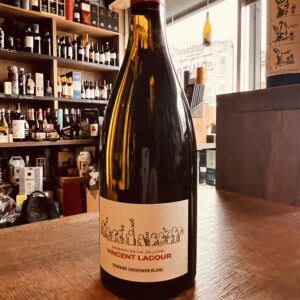-
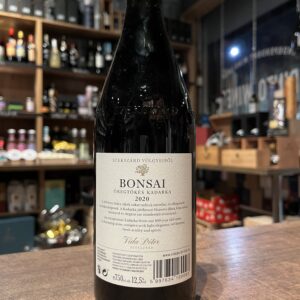
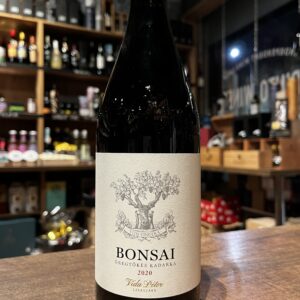 An exceptional Kadarka from the Vida winery's 100 year old vines. The history of the name for this wine is also peculiar. One day, Peter Sr. was presenting his winery to one of his Japanese partners. When they were about to approach the vineyards, the gentleman noticed this little vine and jumped off the car and started shouting “BONSAI!” pointing at them. The tiny appearance of these stocks resembles a Bonsai, which in Japanese culture represents wisdom, a wish for long life and is also a symbol of good luck. A small curiosity is that Kadarka is a grape that was widely available before the Soviet union and well praised. With the Iron Curtain nearly fell into extinction, it's delicious but takes a huge effort to grow and is best from old vines. Reminds you of any other grape with certain similarities?
An exceptional Kadarka from the Vida winery's 100 year old vines. The history of the name for this wine is also peculiar. One day, Peter Sr. was presenting his winery to one of his Japanese partners. When they were about to approach the vineyards, the gentleman noticed this little vine and jumped off the car and started shouting “BONSAI!” pointing at them. The tiny appearance of these stocks resembles a Bonsai, which in Japanese culture represents wisdom, a wish for long life and is also a symbol of good luck. A small curiosity is that Kadarka is a grape that was widely available before the Soviet union and well praised. With the Iron Curtain nearly fell into extinction, it's delicious but takes a huge effort to grow and is best from old vines. Reminds you of any other grape with certain similarities? -
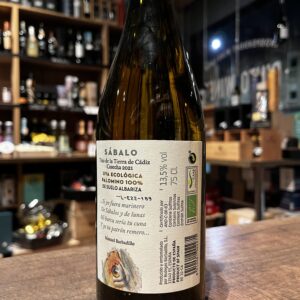
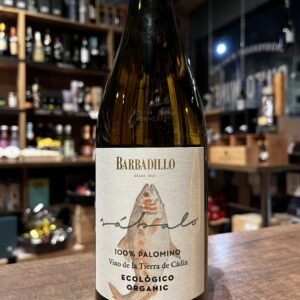 Sábalo is produced from 100% ecological Palomino Fino grapes and it is a spectacular wine, the true fruit of our many years of expertise. The grapes used to produce this wine are harvested in the white albariza soils of Sanlúcar, and as such the sea, the marshlands and the Guadalquivir River all form part of what is essentially Sábalo’s DNA.
Sábalo is produced from 100% ecological Palomino Fino grapes and it is a spectacular wine, the true fruit of our many years of expertise. The grapes used to produce this wine are harvested in the white albariza soils of Sanlúcar, and as such the sea, the marshlands and the Guadalquivir River all form part of what is essentially Sábalo’s DNA. -
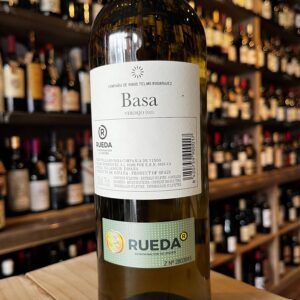
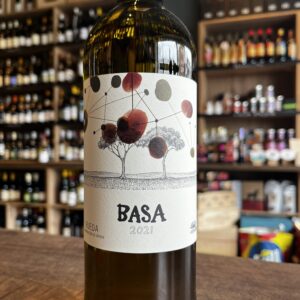 Telmo Rodriguez of Basque origin, studied wine at the Institute of Oenology in Bordeaux, before doing internships with Cos d’Estournel, Jean Louis Chave and Trevallon . He also worked in the vinification of wines from the family estate of Remelluri, in Rioja. Then, in 1990, with an investment of just a few thousand euros, he launched his own winery. He buys grapes to produce his first wines. His first plots of property did not arrive until 1997, in Rioja. Paradoxical for someone who was dying to explore new regions. One of the main principles of Telmo Rodriguez is that of respecting the Spanish tradition of cultivating the vine in goblet, because this method of managing the vine protects it from the great heat of Iberian vineyards. He is fiercely opposed to the fashion of trellising vineyards and only buys vines that respect his ideal. Telmo also works in biodynamics but, showing great common sense, he admits that he only does it for the respect of the land and that the mention of organic viticulture has no importance in his eyes. The important thing is that the result is a balanced and tasty wine. The name comes from the 40-year-old 'baso' or bush-trained vines that are planted on limestone-rich soils at over 700-meters elevation on a plateau along the Duero River. Soils are made of gravel from fluvial terraces, erosion slopes and glacis. Pairs great with comfort food, Tapas and Tortillas of all sorts
Telmo Rodriguez of Basque origin, studied wine at the Institute of Oenology in Bordeaux, before doing internships with Cos d’Estournel, Jean Louis Chave and Trevallon . He also worked in the vinification of wines from the family estate of Remelluri, in Rioja. Then, in 1990, with an investment of just a few thousand euros, he launched his own winery. He buys grapes to produce his first wines. His first plots of property did not arrive until 1997, in Rioja. Paradoxical for someone who was dying to explore new regions. One of the main principles of Telmo Rodriguez is that of respecting the Spanish tradition of cultivating the vine in goblet, because this method of managing the vine protects it from the great heat of Iberian vineyards. He is fiercely opposed to the fashion of trellising vineyards and only buys vines that respect his ideal. Telmo also works in biodynamics but, showing great common sense, he admits that he only does it for the respect of the land and that the mention of organic viticulture has no importance in his eyes. The important thing is that the result is a balanced and tasty wine. The name comes from the 40-year-old 'baso' or bush-trained vines that are planted on limestone-rich soils at over 700-meters elevation on a plateau along the Duero River. Soils are made of gravel from fluvial terraces, erosion slopes and glacis. Pairs great with comfort food, Tapas and Tortillas of all sorts -
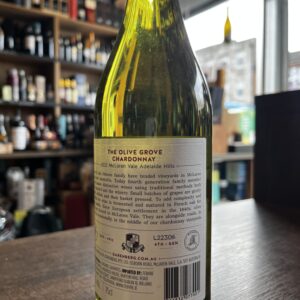
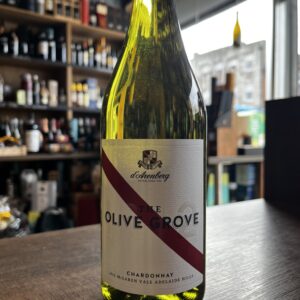 Since 1912 the Osborn family have tended vineyardsin Mclaren Vale, South of Australia. Today fourth generation family member Chester(absolutely bonkers of a guy, draws a room in and within 2 minutes has your attention), makes distintive wines using traditional methods both in the vineyards and the winery. The name comes from European settlements that arised in the 1840’s, and with them olive trees have thrived in McLaren Vale. They are alongside roads, in gardens and occasionally, block their harvesters from doing a fully mechanical job! Perfect with Antipasti, asparagus, chicken and fish
Since 1912 the Osborn family have tended vineyardsin Mclaren Vale, South of Australia. Today fourth generation family member Chester(absolutely bonkers of a guy, draws a room in and within 2 minutes has your attention), makes distintive wines using traditional methods both in the vineyards and the winery. The name comes from European settlements that arised in the 1840’s, and with them olive trees have thrived in McLaren Vale. They are alongside roads, in gardens and occasionally, block their harvesters from doing a fully mechanical job! Perfect with Antipasti, asparagus, chicken and fish -
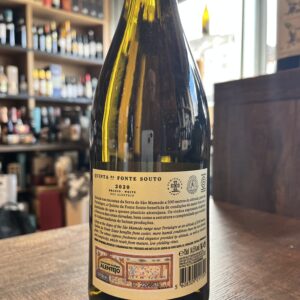
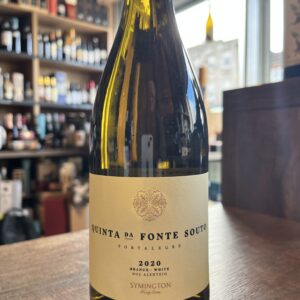 Quinta da Fonte Souto is the first property acquired by the Symington family beyond the Douro. Located in the sub-region of Portalegre in the Alto Alentejo, close to the Serra de São Mamede, the estate benefits from altitude and a cool microclimate, however, due to the schist and granite soils, yields are low, enabling the production of more concentrated and fresher wines. With about 207 hectares, of which 43 are vineyards, the property is not only focused on the planting of vines for wine production but also has a substantial area of chestnut trees, from which the name "souto" (chestnut grove) derives. The first wines from Quinta da Fonte Soute, were launched in 2019 and immediately made success. A Douro oenology adapted to the Alentejo privilege.
Quinta da Fonte Souto is the first property acquired by the Symington family beyond the Douro. Located in the sub-region of Portalegre in the Alto Alentejo, close to the Serra de São Mamede, the estate benefits from altitude and a cool microclimate, however, due to the schist and granite soils, yields are low, enabling the production of more concentrated and fresher wines. With about 207 hectares, of which 43 are vineyards, the property is not only focused on the planting of vines for wine production but also has a substantial area of chestnut trees, from which the name "souto" (chestnut grove) derives. The first wines from Quinta da Fonte Soute, were launched in 2019 and immediately made success. A Douro oenology adapted to the Alentejo privilege. -
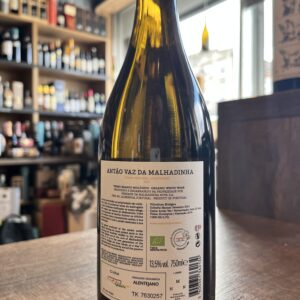
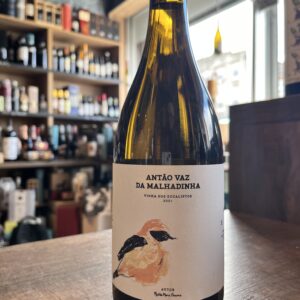 Herdade da Malhadinha Nova is the representation of an ambitious and innovative project of the Soares family, who have transformed a piece of Alentejo land, into one of the most beautiful and charismatic estates in the Alentejo. Located in Albernoa and currently possessing 80 hectares of vineyards, it is here that wines full of personality are created, whose labels are based on the children's drawings of their offspring. In addition to the focus on vines and wine, the estate is also farmed for olive groves and olive oil production, as well as rural and wine tourism activities.
Herdade da Malhadinha Nova is the representation of an ambitious and innovative project of the Soares family, who have transformed a piece of Alentejo land, into one of the most beautiful and charismatic estates in the Alentejo. Located in Albernoa and currently possessing 80 hectares of vineyards, it is here that wines full of personality are created, whose labels are based on the children's drawings of their offspring. In addition to the focus on vines and wine, the estate is also farmed for olive groves and olive oil production, as well as rural and wine tourism activities. -
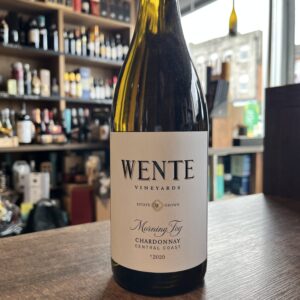 Estate Grown Morning Fog Chardonnay is named for the morning coastal fog pushed by Pacific wind streams into the bowl of the San Francisco Bay. This daily phenomenon moderates the climate to produce excellent, beautifully balanced Chardonnay.Wente Vineyards is one of the oldest, family run wineries, in America having been established in 1883. The Estate extends to some 3000 acres, 2000 in the San Francisco Bay appellation and 1000 acres in Arroyo Seco, Monterey to the south.Pioneers of the Californian Chardonnay clone Wente claim 80% of all Californian Chardonnay is from the Wente original clone. The family, German in origin, has long been innovators introducing stainless steel fermentation tanks in the 60’s and introducing varietal labelled wines as long ago as the 1930’s. Today, fifth generation winemaker Karl D. Wente carries on the family winemaking tradition. Such a smooth wine is delicious to enjoy alone at any time, but if you prefer to pair it, go for light flavoured meals like white meats, pastas, risottos with no added spice.
Estate Grown Morning Fog Chardonnay is named for the morning coastal fog pushed by Pacific wind streams into the bowl of the San Francisco Bay. This daily phenomenon moderates the climate to produce excellent, beautifully balanced Chardonnay.Wente Vineyards is one of the oldest, family run wineries, in America having been established in 1883. The Estate extends to some 3000 acres, 2000 in the San Francisco Bay appellation and 1000 acres in Arroyo Seco, Monterey to the south.Pioneers of the Californian Chardonnay clone Wente claim 80% of all Californian Chardonnay is from the Wente original clone. The family, German in origin, has long been innovators introducing stainless steel fermentation tanks in the 60’s and introducing varietal labelled wines as long ago as the 1930’s. Today, fifth generation winemaker Karl D. Wente carries on the family winemaking tradition. Such a smooth wine is delicious to enjoy alone at any time, but if you prefer to pair it, go for light flavoured meals like white meats, pastas, risottos with no added spice. -
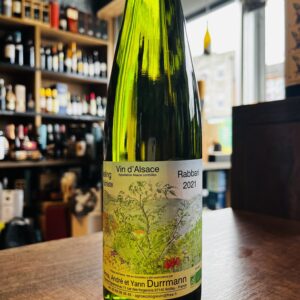 This wine is imported directly and only for Pinto Wines Riesling on Schist makes its terroir apparent with a livewire acidity and snap, rocky, chalky and mineral. Low yielding parcels. Long and driving, a little structure from 2022. The Durrmann family are making wine from their old family house in the middle of Andlau, a beautiful village nestled on the first slopes of the Vosges mountains south-west of Strasbourg. With a surface of only 1,5 hectare at the beginning in 1979, the domaine gradually reached a total surface of seven hectares after André decided to move back to farming and pieced it together from abandoned vineyard sites that were hard to work and no longer commercially viable, coming from his grandfather who made shoes to supplement the farm income. This lack of an established and family-based wine making tradition initially presented a weakness because the whole business had to be built, but it is also a strength because the company wasn’t limited to traditional customs, and therefore has always been oriented toward innovation. The vineyards are now scattered on about 30 spots around the village. They added parcels progressively when opportunities showed up and looked also for different soil qualities so that the cuvées express several terroirs. The Durrmans think that the quality of the wine is created by the work in the vineyard, that’s why their objective is its preservation. The wines are being disturbed as little as possible. They do not add any oenological product to change the natural taste of the wines. The production is partly vinified in inox tank and partly in old wooden casks. Son Yann has worked in the domaine since he was a child and officially took over the running of the business a year ago. André was among the first wave of organic winemakers in Alsace converting in 1998, Yann has then taken this a step further applying a more natural approach in the cellar. Selected cuvées are produced without sulfur addition since 2007. The Durrmanns are true eco warriors only having electric cars and using solar energy for hot water and heating. Pair it with Pork, Seafood, Curries, Spicy dishes
This wine is imported directly and only for Pinto Wines Riesling on Schist makes its terroir apparent with a livewire acidity and snap, rocky, chalky and mineral. Low yielding parcels. Long and driving, a little structure from 2022. The Durrmann family are making wine from their old family house in the middle of Andlau, a beautiful village nestled on the first slopes of the Vosges mountains south-west of Strasbourg. With a surface of only 1,5 hectare at the beginning in 1979, the domaine gradually reached a total surface of seven hectares after André decided to move back to farming and pieced it together from abandoned vineyard sites that were hard to work and no longer commercially viable, coming from his grandfather who made shoes to supplement the farm income. This lack of an established and family-based wine making tradition initially presented a weakness because the whole business had to be built, but it is also a strength because the company wasn’t limited to traditional customs, and therefore has always been oriented toward innovation. The vineyards are now scattered on about 30 spots around the village. They added parcels progressively when opportunities showed up and looked also for different soil qualities so that the cuvées express several terroirs. The Durrmans think that the quality of the wine is created by the work in the vineyard, that’s why their objective is its preservation. The wines are being disturbed as little as possible. They do not add any oenological product to change the natural taste of the wines. The production is partly vinified in inox tank and partly in old wooden casks. Son Yann has worked in the domaine since he was a child and officially took over the running of the business a year ago. André was among the first wave of organic winemakers in Alsace converting in 1998, Yann has then taken this a step further applying a more natural approach in the cellar. Selected cuvées are produced without sulfur addition since 2007. The Durrmanns are true eco warriors only having electric cars and using solar energy for hot water and heating. Pair it with Pork, Seafood, Curries, Spicy dishes -
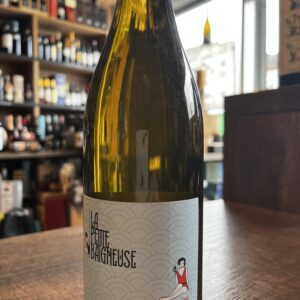 On the border between Roussillon and Corbières, in the heart of the Maury appellation, is the Domaine de la Petite Baigneuse . Philippe Wies, accompanied by his wife Céline, settled at the end of the 2000s, on the superb Maury shale terroirs, at an altitude of 350 meters with breathtaking views of the big blue sea. Surrounded by scrubland and protected by an environment of cliffs, the 14 hectares of vines benefit from a Mediterranean climate tempered by the wind and maritime inlets. Organic since the beginning of the adventure, the Petite Baigneuse estate also practices biodynamics and only works the soil very little. Some plowing is then carried out with a tractor and a tracker so as not to overturn the horizons. Not far from Calce's friends in the people of La Nouvelle Donne , and Domaine Jean-Philippe Padié , Philippe Wies is today an essential figure in the world of natural wines in the south of France. "Juste Ciel", a wine that calls for summer, fresh grilled fish, marinated supions, sea urchins, carpaccio de Saint Jacques.... In short, "La Petite Baigneuse" delivers here a wine to be enjoyed by the poolside with a Mediterranean meal thanks to its delicacy, its freshness and its notes of candied fruits. A very nice white wine to share with a nice meal.
On the border between Roussillon and Corbières, in the heart of the Maury appellation, is the Domaine de la Petite Baigneuse . Philippe Wies, accompanied by his wife Céline, settled at the end of the 2000s, on the superb Maury shale terroirs, at an altitude of 350 meters with breathtaking views of the big blue sea. Surrounded by scrubland and protected by an environment of cliffs, the 14 hectares of vines benefit from a Mediterranean climate tempered by the wind and maritime inlets. Organic since the beginning of the adventure, the Petite Baigneuse estate also practices biodynamics and only works the soil very little. Some plowing is then carried out with a tractor and a tracker so as not to overturn the horizons. Not far from Calce's friends in the people of La Nouvelle Donne , and Domaine Jean-Philippe Padié , Philippe Wies is today an essential figure in the world of natural wines in the south of France. "Juste Ciel", a wine that calls for summer, fresh grilled fish, marinated supions, sea urchins, carpaccio de Saint Jacques.... In short, "La Petite Baigneuse" delivers here a wine to be enjoyed by the poolside with a Mediterranean meal thanks to its delicacy, its freshness and its notes of candied fruits. A very nice white wine to share with a nice meal.


